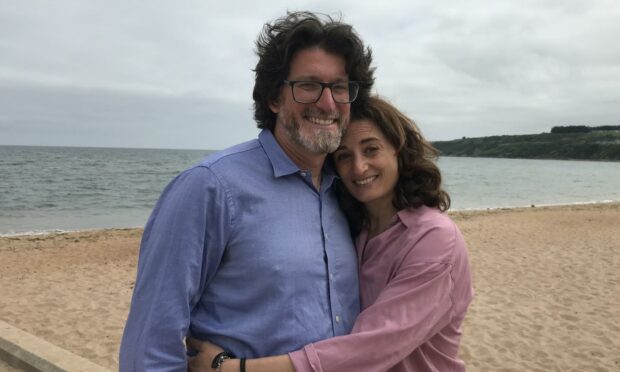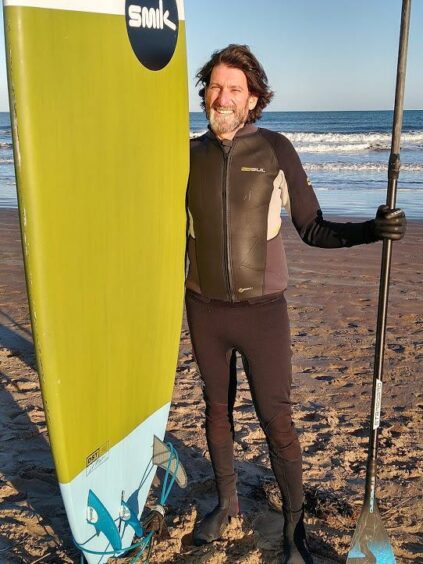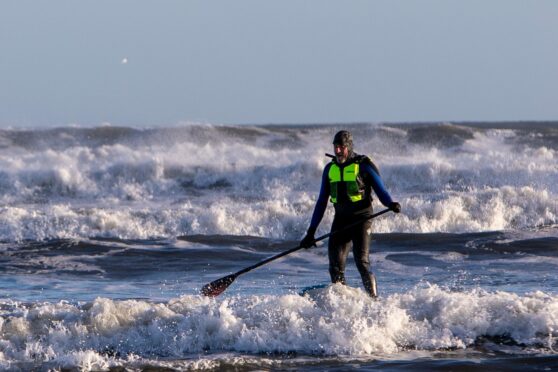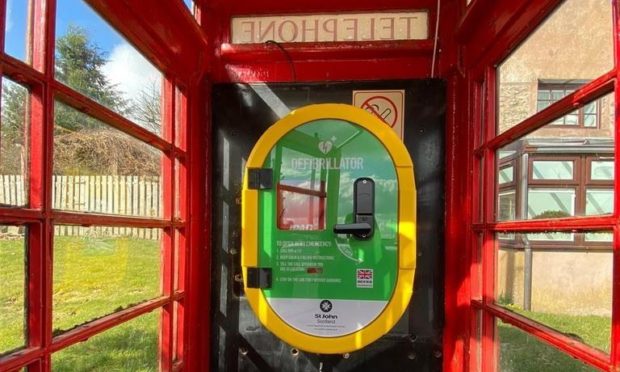A Fife father-of-three who survived a cardiac arrest after surfing off St Andrews is backing a new, lifesaving defibrillator campaign.
Bill Shackman says he wouldn’t be alive today if it wasn’t for the actions of fellow surfers who ran to his aid, performed CPR and used a nearby defibrillator.
Now the 48-year-old has joined leading charities and health organisations to urge defibrillator owners to register their devices on a national database.
This would allow 999 call handlers to direct people to the equipment they need before emergency services arrive.
Bill said knowing where a defibrillator is could make all the difference to someone’s life.
“I know that only too well,” he said.
The campaign, launched on Friday, calls for defibrillators to be registered on The Circuit, a national network that connects to NHS ambulance services.
It means they can be accessed quickly in those crucial moments after a cardiac arrest.
Bill’s defibrillator story
Bill, an academic editor, collapsed in December 2020.
The St Andrews man had been surfing at the East Sands but doesn’t remember anything about the morning of the incident or the hours afterwards.
“I’d headed down to the beach because the weather conditions were perfect for surfing,” he said.
“People at the beach tell me I’d been out in the water for a while.
“Then I came back to shore.
“I must have felt something wasn’t right but I don’t remember anything.
“The next thing I know I am waking up in hospital.”
In fact, Bill had suffered a cardiac arrest and a group of surfers ran to help.
Luckily, one had just completed CPR training at his work earlier that week and another was a retired firefighter.
He knew where the nearest defibrillator was and ran to get it while the group waited for an ambulance.
Bill has been told that the men continued to take turns performing CPR and used the defibrillator on him until the paramedics arrived.
He was then taken to Ninewells Hospital, Dundee, where he was later diagnosed with hypertrophic cardiomyopathy and fitted with an implantable cardioverter defibrillator (ICD).
And he says he owes his life to those who ran to his aid.
“Quite simply, I wouldn’t be here without them to see my children grow up, to spend time with my family,” he said.
“They were ready to respond and determined to keep me alive.
“I am so grateful to the whole community that came together to save me.
“I, my family and friends, we can never thank them enough.
“What happened has definitely made me think about what is really important in life – family, friends.”
The Circuit could save a life
Bill, who lives with wife Emily Michelson and their three children, says the national database is crucial.
“The Circuit is such an important tool to help save more lives,” he said.
“Please, if you are a guardian of a publicly accessible defibrillator, register it with The Circuit.”
Emily agrees and added: “We know how lucky we have been.
“Only one in ten people survives an out-of-hospital cardiac arrest in Scotland and that’s why The Circuit is so important to us.
“If a defibrillator isn’t registered on The Circuit then the ambulance service can’t find it when it’s needed the most.
“But doing so could help save a life.”
Defibrillators: The statistics
There are around 3,200 out-of-hospital cardiac arrests every year in Scotland but only one in 10 people survive.
And every minute that passes without CPR or defibrillation reduces the chances of survival by up to 10% in some instances.
But immediate CPR and defibrillation can more than double the chances of survival.
It is estimated that public access defibrillators are used in fewer than one in 10 out-of-hospital cardiac arrests across the UK
This is often because the ambulance service hasn’t been told about it.
If they don’t know it’s there, they can’t direct someone to it while waiting for an ambulance.
James Jopling, head of the British Heart Foundation (BHF) Scotland said: “Every second counts when someone has a cardiac arrest and, alongside CPR, prompt use of a defibrillator is critical in giving them the best chance of survival.
“To put it simply, knowing where the nearest defibrillator is could be the difference between life and death.”
The Circuit and how to register
Four major organisations are backing the defibrillator campaign.
They are The British Heart Foundation, Resuscitation Council UK, St John Ambulance and Association of Ambulance Chief Executives.
But what is The Circuit and how do you register?
Previously, the UK’s 14 ambulance services had their own regional databases.
But these are being replaced with the new national network known as The Circuit.
It lets emergency call-handlers see where defibrillators are and it’s vital as many as possible are registered.
It’s free and easy to do.
Just visit TheCircuit.uk for more information and to register.



